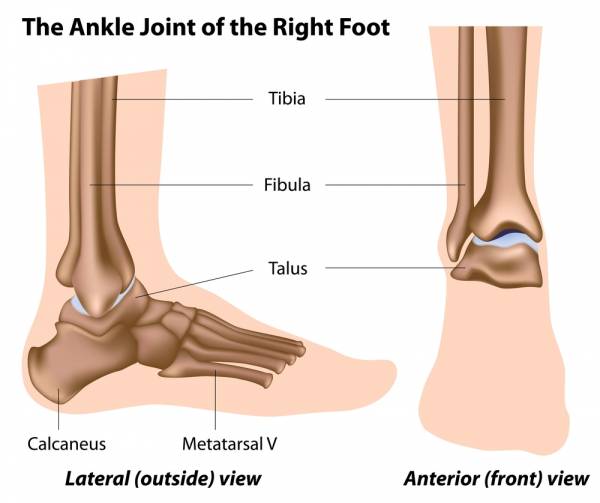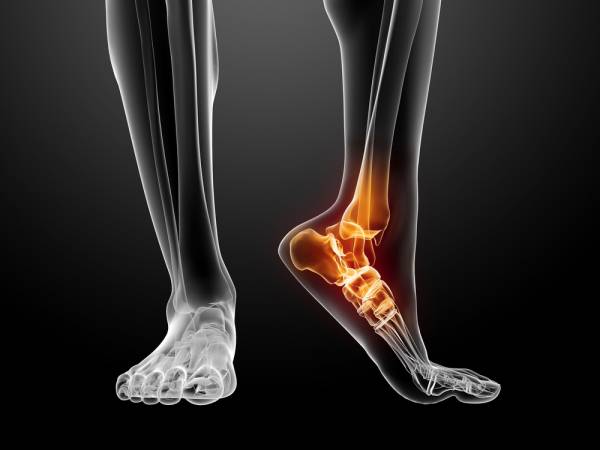Our feet are the most overused, disrespected, and misunderstood parts of our bodies. Our feet are the first shock absorbers, whether we are walking, running, or jumping, and they must convey power to the rest of the body.
Our feet are the most overused, disrespected, and misunderstood parts of our bodies. Our feet are the first shock absorbers, whether we are walking, running, or jumping, and they must convey power to the rest of the body.
The foot must be rigid enough to withstand propulsion, but also pliable enough to conform to numerous spatial arrangements. You know your feet are important, but do you know how they actually work and how to keep them healthy?
Anatomy of the Foot
By no means is this a complete anatomy lesson for our feet and ankles, but rather an overview to help you understand how complex the ankle and foot are in reality.
Our feet are broken into three parts: the rearfoot, the midfoot, and the forefoot. The rearfoot consists of the calcaneus and the talus. The midfoot consists of the navicular, cuboid, and cuneiforms.
The forefoot consists of all the metatarsals and phalanges. There are a number of joints in our feet, as well as muscles, ligaments, and fat pads and bursas.
Movement of the Foot
In addition to understanding the anatomy of our foot, we should also understand its movements. Terms such as dorsiflexion and plantarflexion, adduction and abduction, and inversion and eversion are all used to describe ankle and foot movement depending on which axis of rotation is involved.
The subtalar and talocrural joint make up what many of us know as the ankle joint. Both joints involve the talus bone. The talocrural joint involves the talus, the tibia, and the fibula. The subtalar joint involves the talus and the calcaneus.
These particular ankle joints operate around an oblique axis and this is where you’ll hear terms such as supination (rolling to the outside) and pronation (rolling to the inside).
Supination involves inversion, adduction, and plantarflexion. Pronation involves eversion, abduction, and dorsiflexion.

The talus rolls and slides nicely under the end of the tibia during movement. Basically, during plantar flexion (point the foot) the talus rolls backward and slides forward.
The opposite happens during dorsiflexion (pulling the toes toward the shin) – it rolls forward and slides backward. During dorsiflexion, the Achilles tendon and calf musculature are pulled tight. So, person with chronic calf and Achilles issues will have a talus that is slightly fixated anteriorly.
When a person pronates and supinates while walking (weight bearing), the calcaneus is fixed to the ground. Therefore, the subtalar joint and the tarsal joints work together to support the foot and dissipate shock, adapting to uneven surfaces such as rocks or sand.
We are designed to walk on uneven surfaces. We are designed to pronate and supinate over uneven surfaces.
Our feet are phenomenal at orienting us in space and providing stability. Pronation or supination is only a “bad thing” when some area of our lower extremity doesn’t function properly, putting stress elsewhere and resulting in issues such as over-pronation.
Arches of the Foot
There are two arches in the foot that need to be discussed: the medial longitudinal arch, which is a huge shock absorber in the foot, and the transverse arch, which evens out bodyweight across all the metatarsal heads.
More times then not, when a practitioner treats someone with “dropped arches” they provide orthotics that support the medial longitudinal arch but do not address the transverse arch. This results in major fixations in the rearfoot, with the midfoot and forefoot compensating.
When a person is told to wear an insert for arch support, it may fix the pain right away, but the original cause of the problem was never addressed.

When a person is having foot and ankle issues, observing their gait along with applying a little bit of foot palpation usually reveals the answers.
If any joint in the foot and ankle is not operating optimally, then the load is transferred elsewhere and the foot must compensate. This compensation pattern affects everything from the knee, to the hip, and even the lumbar spine.
Tips for maintaining healthy ankles and feet:
1. Run correctly. If you do not know how to run correctly, then don’t run. If you have had chronic IT band issues, chronic calf issues, or chronic anything, chances are you do not run correctly. It kills me when I see people heel striking or running while one leg is externally rotated or they are breaking at the hips, and yet, they still continue to train for the LA Marathon.
2. Strengthen your ankles and feet. This includes muscles and proprioception. If you’ve had an ankle or foot injury, then you need to have ankle stability exercises in your warm up at least three times a week:
- Run or walk on soft sand once a week. This activates all the intrinsic foot musculatures.
- Balance on a couch cushion on one leg for 60 seconds. Then, do it again with eyes closed.
- Include ankle hops in your dynamic warm up. This is where you jump by only dorsi- and plantarflexing your ankles.
3. Mobilize your ankles and feet. Like I said earlier, your feet need to be strong and flexible. Here are some ways to mobilize:
- Towel curls help to maintain the transverse arch.
- Talus mobilization especially if you have Achilles issues is key.
- Establishing a short foot is great training. This can be done while standing with foot on ground or with foot on Indo Board or couch cushion to train proprioception even more.
- Walk on your inverted and everted ankles. We used to do this to warm up in gymnastics, and now I continue to do it every time I work out. You will look silly and it will feel weird, but it is a great ankle warm up.
By all means, this is no comprehensive anatomy lesson of the foot and ankle. Nor it is a complete rehab guide.
However, my purpose is to open your eyes a bit as to how complex and uniquely designed that each of our ankles and feet are.
Now that you have this information perhaps you can better take care of them and keep them performing.
Photos courtesy of Shutterstock.






